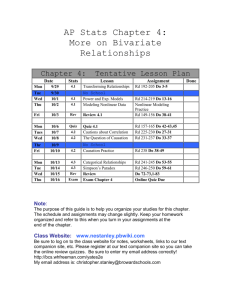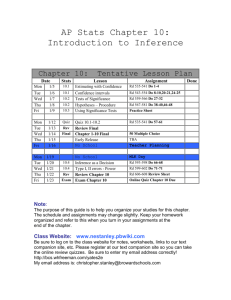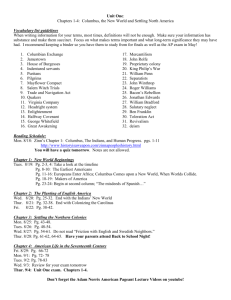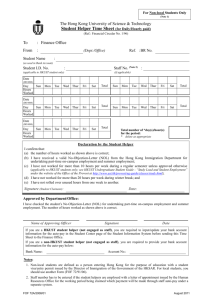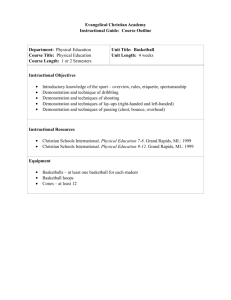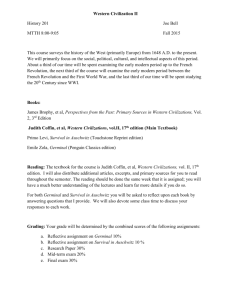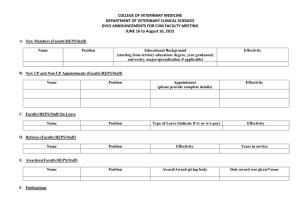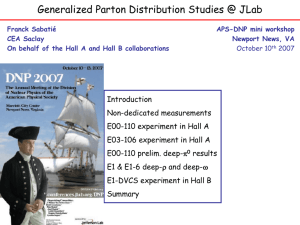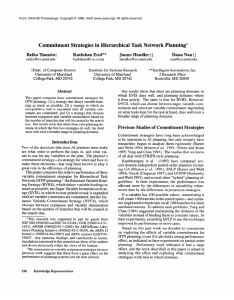Unit 6 macro calendar 2013-2014
advertisement
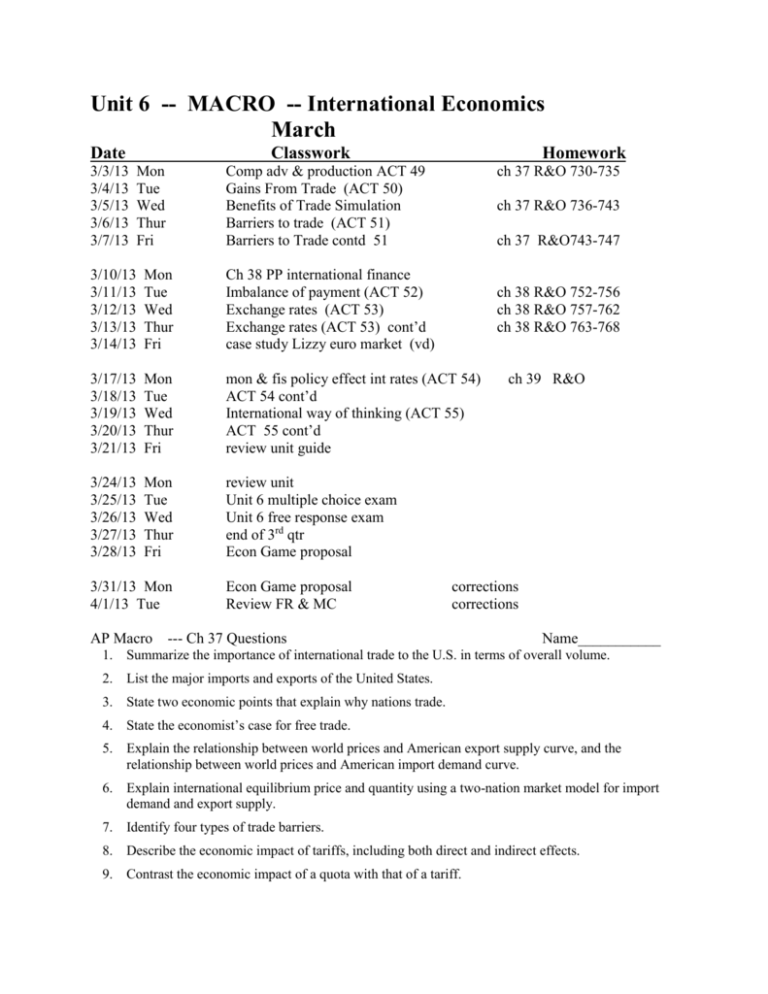
Unit 6 -- MACRO -- International Economics March Date 3/3/13 3/4/13 3/5/13 3/6/13 3/7/13 Classwork Mon Tue Wed Thur Fri Homework Comp adv & production ACT 49 Gains From Trade (ACT 50) Benefits of Trade Simulation Barriers to trade (ACT 51) Barriers to Trade contd 51 ch 37 R&O 730-735 ch 37 R&O 736-743 ch 37 R&O743-747 3/10/13 3/11/13 3/12/13 3/13/13 3/14/13 Mon Tue Wed Thur Fri Ch 38 PP international finance Imbalance of payment (ACT 52) Exchange rates (ACT 53) Exchange rates (ACT 53) cont’d case study Lizzy euro market (vd) 3/17/13 3/18/13 3/19/13 3/20/13 3/21/13 Mon Tue Wed Thur Fri mon & fis policy effect int rates (ACT 54) ACT 54 cont’d International way of thinking (ACT 55) ACT 55 cont’d review unit guide 3/24/13 3/25/13 3/26/13 3/27/13 3/28/13 Mon Tue Wed Thur Fri review unit Unit 6 multiple choice exam Unit 6 free response exam end of 3rd qtr Econ Game proposal 3/31/13 Mon 4/1/13 Tue Econ Game proposal Review FR & MC ch 38 R&O 752-756 ch 38 R&O 757-762 ch 38 R&O 763-768 ch 39 R&O corrections corrections AP Macro --- Ch 37 Questions Name___________ 1. Summarize the importance of international trade to the U.S. in terms of overall volume. 2. List the major imports and exports of the United States. 3. State two economic points that explain why nations trade. 4. State the economist’s case for free trade. 5. Explain the relationship between world prices and American export supply curve, and the relationship between world prices and American import demand curve. 6. Explain international equilibrium price and quantity using a two-nation market model for import demand and export supply. 7. Identify four types of trade barriers. 8. Describe the economic impact of tariffs, including both direct and indirect effects. 9. Contrast the economic impact of a quota with that of a tariff. 10. List seven arguments in favor of protectionist barriers, and critically evaluate each. 11. Identify the costs of protectionist policies and their effects on income distribution. 12. Describe the major provisions of the WTO. 13. Define and identify terms and concepts listed at the end of the chapter. AP Macro -- Ch 38 Rd gd Name__________________ 1. Explain how U.S. exports create a demand for dollars and a supply of foreign exchange; and how U.S. imports create a demand for foreign exchange and a supply of dollars. 2. Explain and identify the various components of the balance of payments. 3. Identify trade and balance of payments deficits or surpluses when given appropriate data. 4. Explain how a nation finances a “deficit” and what it does with a “surplus.” 5. Explain how exchange rates are determined in a flexible system. 6. Explain how flexible exchange rates eliminate balance of payments disequilibria. 7. List five determinants of exchange rates. 8. List three disadvantages of flexible exchange rates. 9. List three ways a nation could control exchange rates under a fixed-rate system. 10. Describe a system based on the gold standard, the Bretton Woods system, and a managed float exchange rate system. 11. Describe two effects of a trade deficit. 12. Define and identify terms and concepts listed at the end of the chapter. AP Macro -- Ch 39 Questions Name_____________ 1. Distinguish between industrially advanced and two categories of developing countries (DVCs). 2. Identify factors that characterize DVCs. 3. Describe the growth rates of IACs, middle-income DVCs, and low-income DVCs. 4. Enumerate some human implications of poverty in the DVCs. 5. State the two basic avenues for growth for a nation. 6. Describe the four primary obstacles to growth in the DVCs. 7. Illustrate by diagram the vicious circle of poverty. 8. State five features of the positive role of government in development. 9. Explain the problems of public sector involvement in development. 10. Describe three aspects of the role of advanced nations in development assistance. 11. Describe the extent of DVC debt, consequences, and possible solutions including debt forgiveness. 12. List and describe nine policies for promoting economic growth in the DVCs. 13. Define and identify terms and concepts listed at the end of the chapter.
